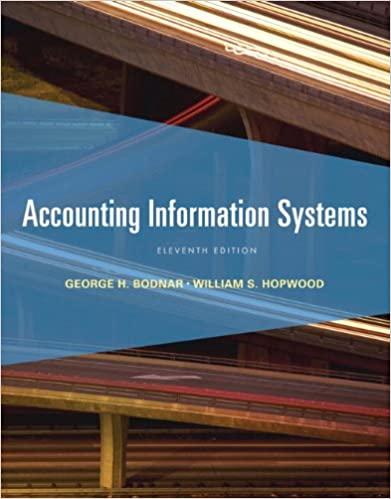1. As payments are received, one mailroom employee is assigned the responsibility of prelisting receipts and preparing...
Question:
a. Adequate internal control.
b. Inadequate internal control because mailroom employees should not have access to cash.
c. Inadequate internal control because treasury employees should prepare the deposit slip.
d. Inadequate internal control because of a lack of segregation of duties.
2. Which of the following internal control procedures will most likely prevent the concealment of a cash shortage resulting from the improper write- off of a trade account receivable?
a. Write- offs must be approved by a responsible officer after review of credit department recommendations and supporting evidence.
b. Write- offs must be supported by an aging schedule showing that only receivables overdue several months have been written off.
c. Write- offs must be approved by the cashier who is in a position to know if the receivables have, in fact, been collected.
d. Write- offs must be authorized by company field sales employees who are in a position to determine the financial standing of the customers.
3. For the purpose of proper accounting control, postdated checks remitted by customers should be
a. Restrictively endorsed.
b. Returned to the customer.
c. Recorded as a cash sale.
d. Placed in the joint custody of two officers.
4. A company policy should clearly indicate that defective merchandise returned by customers is to be delivered to the
a. Sales clerk.
b. Receiving clerk.
c. Inventory control clerk.
d. Accounts receivable clerk.
5. To conceal defalcations involving receivables, the auditor would expect an experienced bookkeeper to charge which of the following accounts?
a. Miscellaneous income.
b. Petty cash.
c. Miscellaneous expense.
d. Sales returns.
6. The most likely result of ineffective internal control policies and procedures in the revenue cycle is that
a. Irregularities in recording transactions in the subsidiary accounts could result in a delay in goods shipped.
b. Omission of shipping documents could go undetected, causing an understatement of inventory.
c. Final authorization of credit memos by personnel in the sales department could permit an employee defalcation scheme.
d. Fictitious transactions could be recorded, causing an under-statement of revenues and overstatement of receivables.
7. Proper authorization procedures in the revenue cycle usually provide for the approval of bad- debt write- offs by an employee in which of the following departments?
a. Treasurer.
b. Sales.
c. Billing.
d. Accounts receivable.
8. Tracing bills of lading to sales invoices provides evidence that
a. Shipments to customers were invoiced.
b. Shipments to customers were recorded as sales.
c. Recorded sales were shipped.
d. Invoiced sales were shipped.
Accounts Receivable
Accounts receivables are debts owed to your company, usually from sales on credit. Accounts receivable is business asset, the sum of the money owed to you by customers who haven’t paid.The standard procedure in business-to-business sales is that... Aging Schedule
Aging schedule is an accounting table that shows a company’s account receivables. It is an summarized presentation of accounts receivable into a separate time brackets that the rank received based upon the days due or the days past due. Generally...
Fantastic news! We've Found the answer you've been seeking!
Step by Step Answer:
Related Book For 

Accounting Information Systems
ISBN: 9780132871938
11th Edition
Authors: George H. Bodnar, William S. Hopwood
Question Posted:





